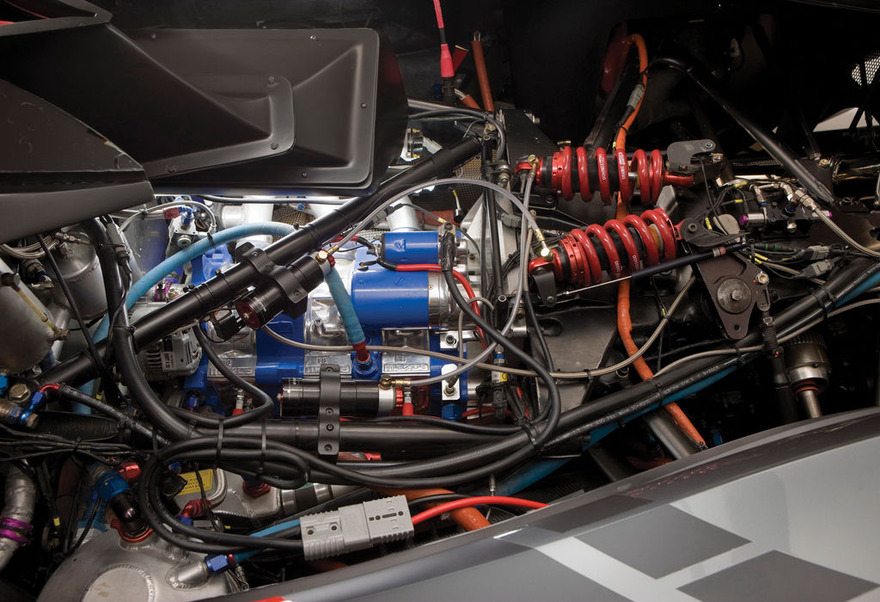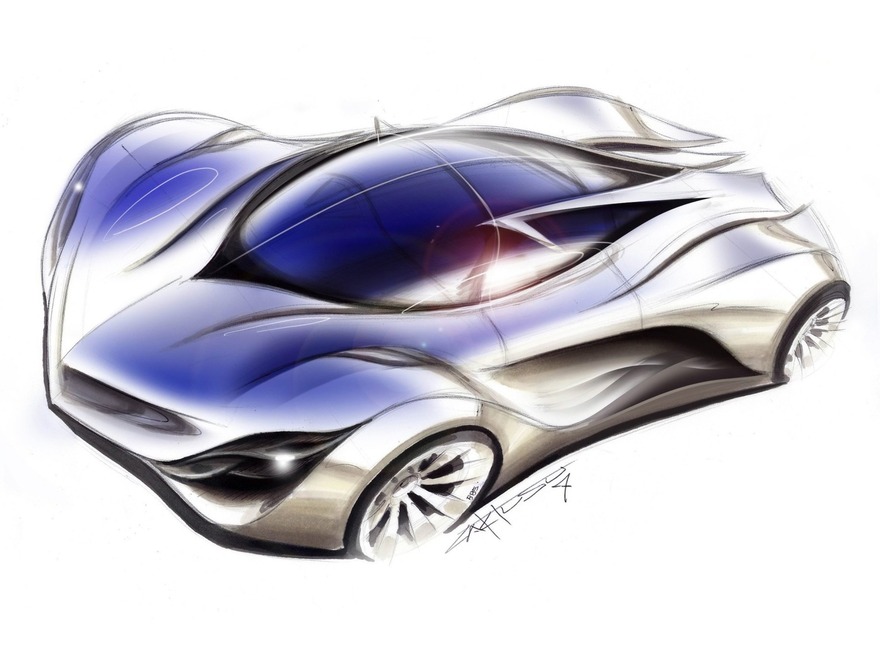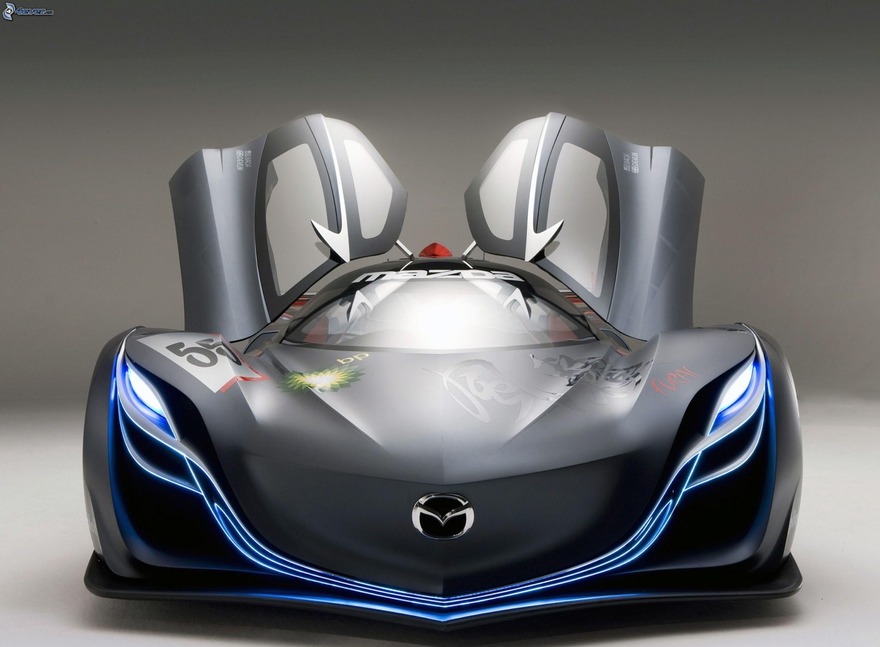The most extreme but eco-friendly at the same time Mazda Furai concept car was first revealed in December 2007. It had its official premier in 2008 at the North American International Auto Show in Detroit. The project was headed by Franz von Holzhausen, Mazda's North American Director of Design, who revealed the idea of creating the concept car: “Historically, there has been a gap between single-purpose race cars and street-legal models — commonly called supercars — that emulate the real racers on the road. Furai bridges that gap like no car has ever done before”.
Mazda Furai was based on the race car Courage C65.
Courage C65 received recognition in the course of two seasons of endurance races in LMP2 class of the American Le Mans Series. This car had success in races in 2005 and 2006 participating in competitions under the control of the B-K Motorsports team and the flag of MAZDASPEED Motorsports Development. Team’s drivers Jamie Bach, Guy Cosmo, Elliott Forbes-Robinson and Raphael Matos piloted the car to one victory and a total of nine podium finishes in 15 ALMS events. B-K Motorsports team was third in the overall standings of both championships. Bach and Cosmo were awarded 2005 Best Rookie titles.
Two-seat rear-wheel drive concept car was created with the help of the most advanced technologies of its time. The body of the car is made of carbon fibre and composite materials, its curb weight is about 1,200 kg.
The width of the body is around two metres, its length is almost four metres. Furai is barely 1 metre high and you almost have to come down on all fours in order to get a view of the cabin. The car features guillotine style doors providing the most comfortable mount and dismount.
Furai is equipped with a unique engine delivering 450 hp — it’s a 20B three-rotor rotary engine. Noteworthy is the fact that the engine is run not on traditional petrol, but uses E100 ethanol fuel instead. Gear selection is done sequentially through a sex-speed transmission with the help of shift paddles built into the steering wheel.
Team work and good partnership relations with the leading manufacturers in car industry allowed building the Furai in the best way possible:
— Racing Beat — help in creating the world’s only three-rotor rotary engine running on ethanol fuel;
— Mother’s Waxes and Polishes — their polishing and cleaning tools made sure the car always looked great;
— Liferacing together with AER designed the paddle shift control for manual gear shifting;
— Brembo worked on braking mechanisms;
— Sachs and Eibach — developed the entire package of dampers and suspension springs which provided great handling;
— Nippon Paint — offered the three-feet-deep paintwork;
— Castrol — provided lubricating oil;
— Kumho — a unique tread pattern specially designed for Furai’s tyres;
— BBS — 14-spoke aluminium wheels;
— Sparco Motor Sports — provided the seat-belts;
— MoTeC — manufactured and tuned the data acquisition and powertrain controllers.
Furai’s top speed is 340 km/h and it able to accelerate from 0 to 100 km/h in just 3.7 seconds.
Furai means «sound of the wind» in Japanese.
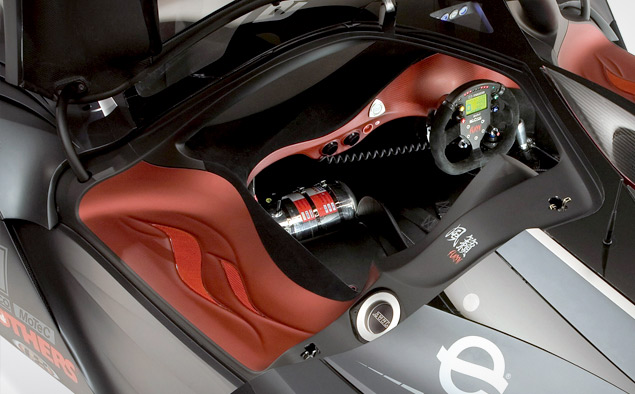
Furai was the fifth and last of the Mazda Nagare line of concept cars that have been made by Mazda since 2006. The car’s exterior looks like a piece of art from the point of view of its design. The shape of this Japanese car is so aerodynamically perfect that neither the eye, nor the wind can spot anything obtrusive in it.
The rear end of Mazda Furai’s body is necked and uplifted. Cockpit features a glass roof like a battle airplane. However, the cabin is a bit too narrow for two people. The cockpit’s interior had to be fully redesigned — in the original race model the passenger seat is occupied by various electronic devices. All these components had to be relocated in order to provide enough space for two people.
The glass roof was a bit wider than the one used by its prototype — race car Courage C65 — so that the passenger had enough headroom. The body width at shoulder height was also increased to achieve the required range of visibility. Apart from shift paddles, the steering wheel was also fitted with an electronic display.
Different colour layout — black and red — is used to visually divide the area of the driver and the passenger in the Mazda Furai. Apparently, the passenger should also derive an extreme pleasure from the car.
Concept car in computer games:
Mazda Furai was used in Gran Turismo 5 and Gran Turismo PSP as a standard vehicle;
in 2008 Mazda Furai was licensed for Gameloft. The supercar appeared in a series of mobile games Asphalt 6: Adrenaline and Asphalt 7: Heat;
it is the most expensive vehicle in the racing video game GT Racing: Motor Academy — Furai costs 3,500 cash;
the eco-friendly supercar appears in Forza Motorsport 3 as a downloadable car and in Forza Motorsport 4 as part of the core game.
Mazda Furai has both overwhelming proportions and a stunning silhouette. Each line in its body construction contributes to overall improvement of its aerodynamics performance. Major criteria when creating the car were the aerodynamic drag coefficient, downforce, lift and overall aesthetics.
Side body panels direct airstreams to the braking mechanisms of the rear wheels, oil radiator and transmission-fluid radiator. Aerodynamic equipment concentrates the air which gets under the front part of the vehicle and leads it inside to the engine cooling radiator. Under-the-bottom diffuser rising behind the cockpit increases the airstream which goes through the engine compartment. Even the headlight trim ring is there for a purpose — it is one of the elements which blocks lifting power.
Mazda designers and engineers conducted optimisation of Furai’s aerodynamic characteristics together with the experts from Swift Engineering. The engineers used Computational Fluid Dynamics (CFD) software when developing and building the supercar — it has shown good results when building race cars. Research suggested that the built-in front spoiler and special body surface provided a great aerodynamic balance so it was not necessary to have a big rear spoiler.
Rotary engine is unique: combustion air is provided by a variation of the Turbo Tongue device that Swift Engineering developed for Indy car use a decade ago. It rises slightly higher than the surrounding roof surface to ingest clean air above the boundary layer. Mazda applied for a joint patent with Swift.
The global interest in developing alternative fuel types in car industry picks up from year to year and for Mazda concept Furai became its first experience in creating a rotary engine powered by ethanol fuel. Furai’s powerplant is set up to use ethanol (ethyl alcohol) and petrol-alcohol blends to reduce fossil fuel consumption and emission of harmful greenhouse gases.
Ethanol is produced from grain crops (corn, wheat, soybeans). Corn is the predominant feedstock. Grains are converted to ethanol through a process of dry and wet ground. There are other promising techniques for producing renewable fuels — various methods of treatment of cellulosic biomass using agricultural wastes (leaves and stems of corn, bagasse from sugar cane, cereal straw) and also plant wastes from industrial processes (sawdust, paper pulp).
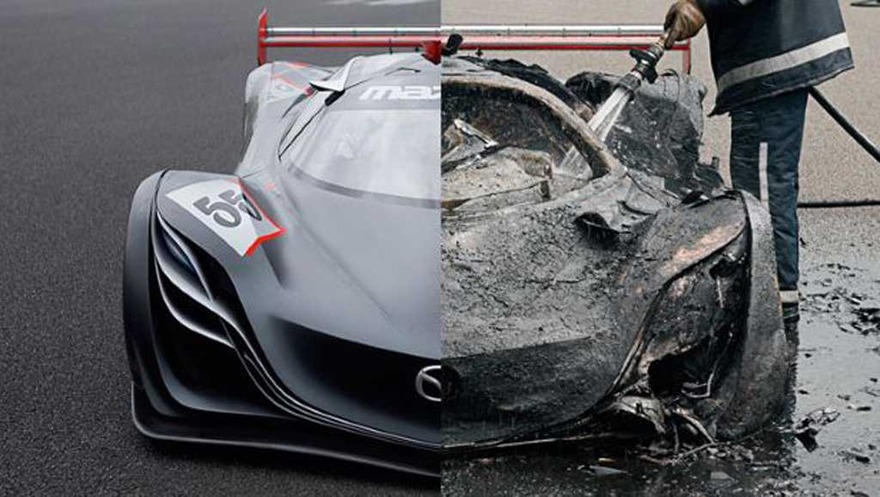
Turned out that the incident happened more than 5 years ago — it was back in 2008. The journalists offered excuses: “Sometimes things go wrong. Sometimes things go awfully wrong. So wrong that we even have to keep quiet for years about what had happened. So it was with Mazda Furai...” Top Gear apologises for what they have done: “Forgive us, for we have sinned. Top Gear is responsible for the untimely demise of the quite remarkable Mazda Furai Concept, and we're very, very sorry. Try not to hate us too much”.
Top Gear is the worldwide famous British TV programme dedicated to cars which is broadcast since 1977.
August 19, 2008, 11:52 a.m. The final photography session at Bentwaters Parks. Stig was the first to test the car on a two-kilometre runway, next was Bill Thomas who was driving the car for about an hour under the supervision of mechanics, team’s pilot Mark Ticehurst and the local fire team.
During the photo session one of the photographers noticed a small cone of bluish fire coming out of the exhaust pipe when the driver was shifting the gears down and decided to take a picture of it — a beautiful moment to capture. Ticehurst replaced Thomas behind the wheel of the supercar.
While the photographer was taking pictures, Ticehurst started decelerating and downshifting. Then suddenly Furai started producing a strange abnormal sound instead of the usual roar of a race car. And quite soon the photographers could see fire flames deep inside the engine compartment.
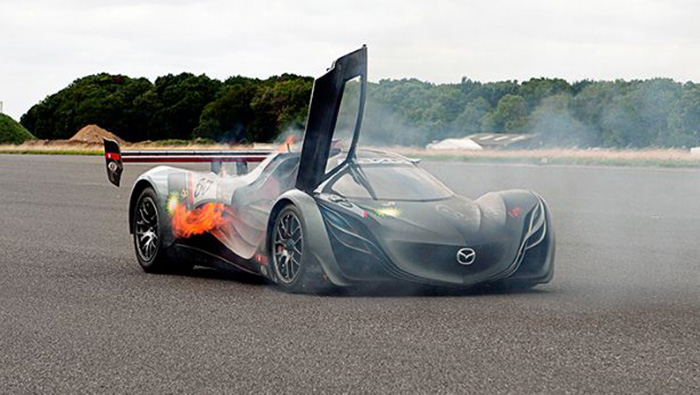
In the end of this article I would like to quote Top Gear journalists: “Mazda didn't want the Furai's demise made public at the time, but their decision to allow us to publish this story hopefully marks the start of the next chapter in the Furai's history. If ever a concept car deserved to rise from the ashes, surely it is this one”.


